Kashmir
Hari Parbat Fort Srinagar Kashmir
Mother Masala Tours
Three Faiths, One Hill
Hari Parbat Fort Srinagar Kashmir. Situated majestically on a hill, the Fort, provides invaluable insights into the culture and history of the region. Constructed in the 18th century under the guidance of Afghan governor Ata Mohammad Khan, this fort stands as a testament to the diverse legacy and artistic prowess of Kashmir. Srinagar, surrounded by stunning landscapes and a rich heritage, invites us to engage with its historical narratives and spiritual essence. The construction of the fort commenced during the Afghan rule, specifically in 1808. Named after the presiding deity of the hill, Sharika, the fort’s strategic placement adds spiritual significance to its historical authority.
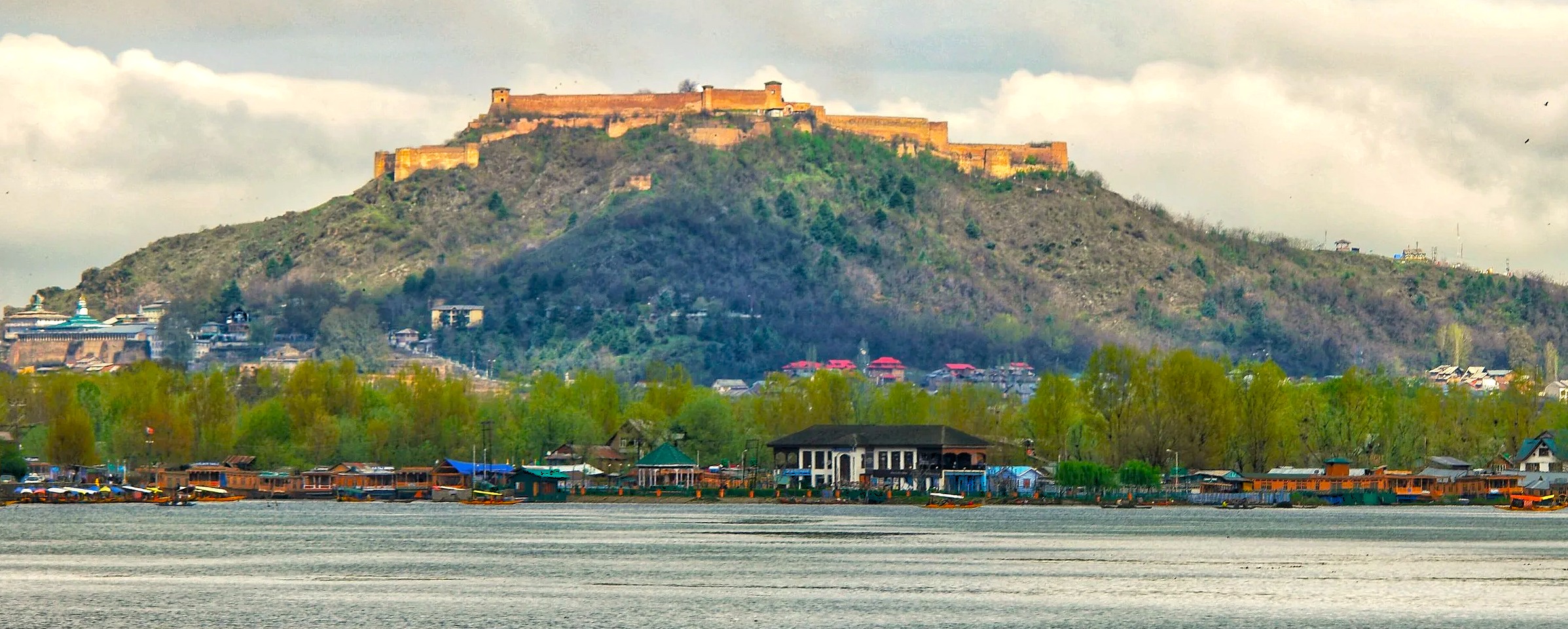
Hari Parbat Fort Srinagar Kashmir: Timeless Artifacts
Within and surrounding the fort, we encounter unique artifacts embodying the cultural richness of Kashmir. The fort is home to several historic structures, including the Sharika Devi Temple and the Makhdoom Sahib Shrine. These sacred spaces attract those seeking spiritual connection and reflection, embodying the essence of Kashmir's diverse religious practices. The temple, dedicated to the Goddess Sharika, features intricately carved sculptures and ancient inscriptions, each telling a part of Kashmir’s storied past.
Ancient Mosaics: Impeccable Craftsmanship
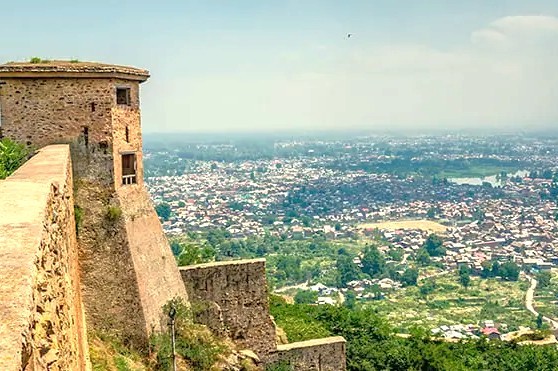
The artistic influence at the Fort stands out in many details throughout the structure. Stone carvings on the fort’s walls display a blend of local and Persian designs, with each motif shaped using traditional Afghan techniques. We see decorative arches, geometric patterns, and elegant floral borders worked into the stone. The fort’s surfaces are covered with inscriptions, some featuring poetic verses while others contain carefully carved Quranic excerpts. Each element draws attention to the craftsmanship that shaped Hari Parbat’s unique appearance across centuries.
The Pulse of the Local Community
Local residents possess a deep connection to their heritage, embodying values of hospitality and warmth. Their commitment to preserving traditions is evident in the way they engage with their culture and community. As we traverse the area, the atmosphere remains peaceful, and you will find that the locals are willing to share stories and histories that resonate within their spirit. This friendly disposition adds to our experience, making us feel at home in this historical landscape, allowing us to appreciate the site’s significance even more.
Capturing the Magic: A Photographic Haven
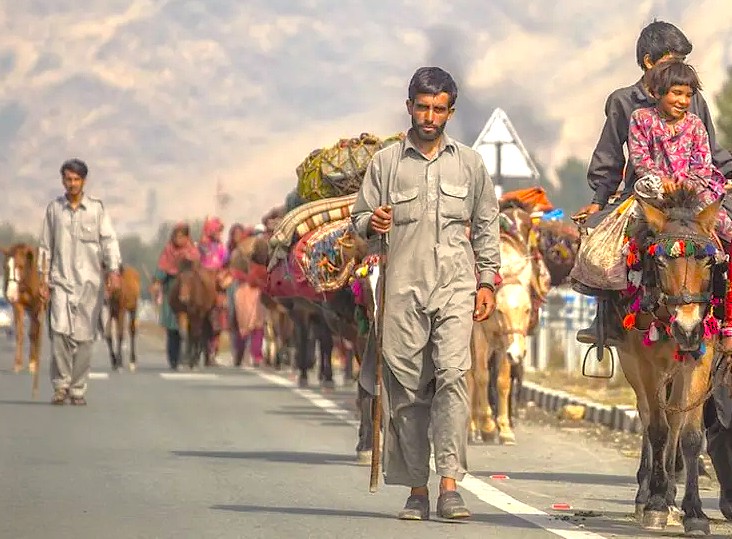
This historical site offers many photographic opportunities that highlight the unique features of the region. The fort stands on a prominent hill, providing broad views over Dal Lake and the nearby Himalayas. Its stone walls and bastions are well preserved, adding character to each shot. The blend of architectural styles and natural landscape creates balanced images from every angle. Light changes quickly across the area, so sunrise and sunset give the scene different moods and colors. The fort’s gateways and passageways are ideal for framing shots, with details in every corner.
A Culinary Journey: Savor the Flavour
Hari Parbat Fort Srinagar Kashmir. The cuisine embodies a rich tapestry of flavors influenced by its cultural and historical backdrop. One dish that stands out is Rogan Josh, a tender lamb curry known for its red color derived from Kashmiri red chilies. The cooking method involves slow-cooking the meat with spices such as cardamom, cinnamon, and garlic. Another specialty is Gushtaba, which comprises meatballs in a creamy yogurt sauce, flavored with spices.
The Connection with the Gods
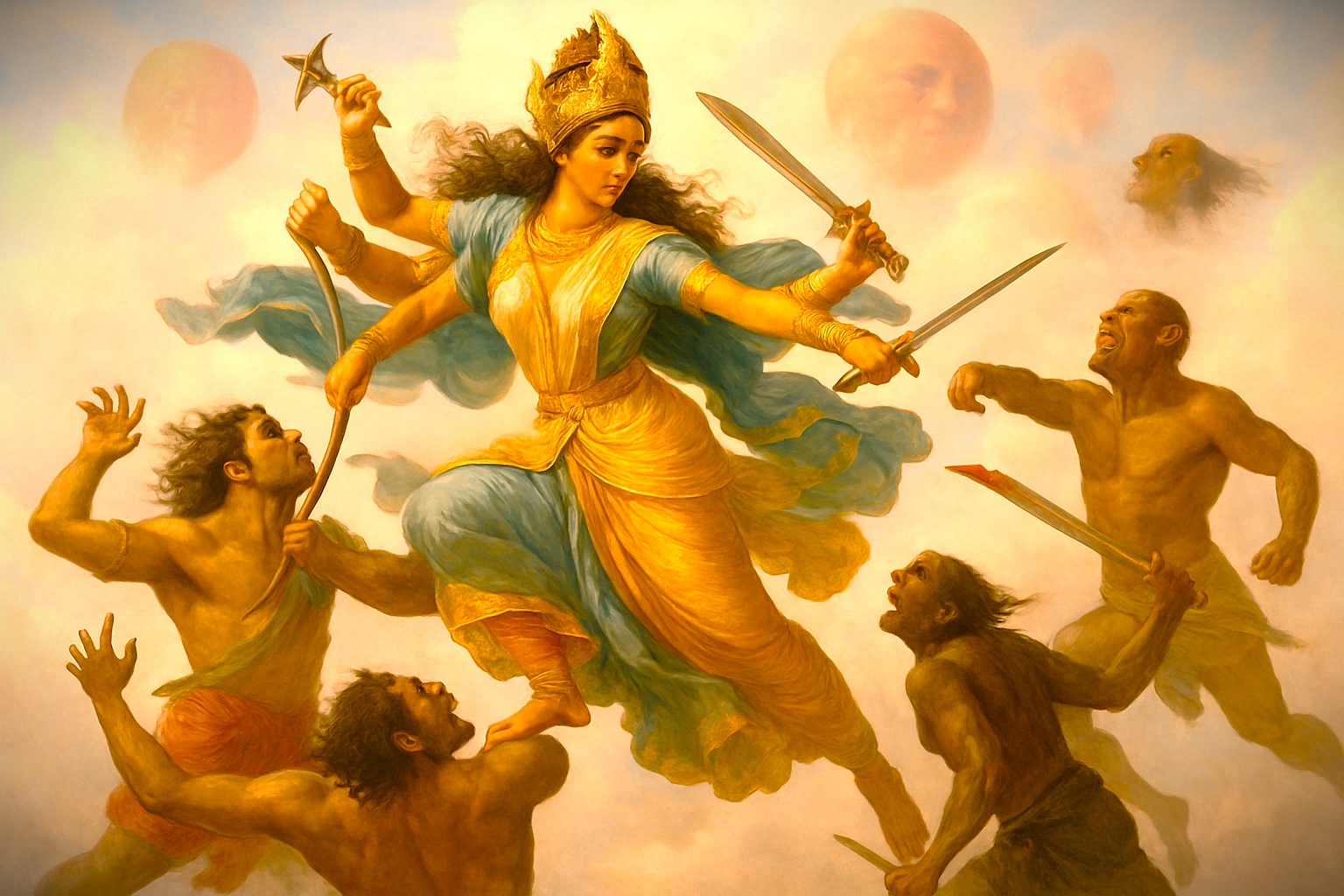
The presence of Goddess Durga at the Fort is linked to stories from local mythology. According to these stories, Durga is believed to have fought and overcome a powerful demon at the site of the hill, a battle that gave the area special significance in Hindu belief. Statues and reliefs of Durga can be found at shrines on the fort grounds, often depicting her with multiple arms and holding symbolic weapons. The hill itself is viewed as sacred to several faiths in Kashmir and features layers of history, myth, and legend. These traditions are reflected in the rituals and festivals held regularly at the site throughout the year.
Ancient Technologies: Sacred Sound, Geometry & Astrological Influences
The design of the Fort reflects advanced architectural knowledge and sacred geometry principles. Its layout is aligned with specific celestial configurations that aimed to harmonize space with cosmic patterns. Elements of sacred geometry are represented in the fort’s design, promoting balance and calmness within the space. The stone walls reflect differing sound frequencies that resonate throughout the fort. Ancient Solfeggio frequencies (396Hz-852Hz) resonate through Hari Parbat's stone corridors, creating healing vibrations that harmonize mind, body, and spirit.
Serendipitous Meetings: Beyond the Main Path

The surroundings offer opportunities for discovery on every visit. The paths around the fort bring us close to local craftsmen and their skills. Artisans often display intricate papier-mâché items, hand-painted with floral and geometric designs. Weavers set up small stalls nearby, their looms busy turning out colorful Kashmiri shawls. Walking through local markets near the fort, we see shopfronts filled with carved walnut wood boxes and trays. Basket-makers and jewelers sometimes share stories about their materials and creative process. This setting is lively, with daily routines visible in open courtyards and shaded pathways.
Festivals of Devotion: Honouring the Sacred and the Divine
Hari Parbat Fort Srinagar Kashmir. Kashmir celebrates various festivals that reflect its rich spiritual traditions. One prominent festival is Navratri, dedicated to the worship of the Goddess Durga. It spans nine nights, with rituals and celebrations occurring in temples and homes across the region. Pilgrims and devotees often flock to the Sharika Devi Temple during this period, seeking blessings and participating in festivities filled with color and devotion. Another significant event is Eid al-Fitr, which marks the end of Ramadan. This festival is celebrated with communal prayers, feasting, and sharing meals with family and friends, strengthening bonds of community and hospitality.
Resilience and Renewal: Overcoming Adversity’s Challenges
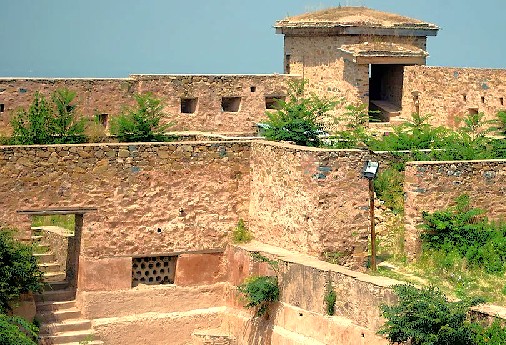
Hari Parbat in Kashmir has faced many challenges throughout its history, shaped by natural forces and social developments. The devastating floods of 2014 brought damage to several structures across Srinagar, including the old fort’s walls and passageways. Local residents teamed up with authorities, quickly organizing repairs and rebuilding lost sections of the fort. Masons and carpenters set to work restoring the stone and timber, repairing historic gateways and towers. Conservation teams used both traditional materials and new techniques to help the fort withstand harsh weather.
Urban Legends: Strange Sightings, Myths and Mysteries
One well-known legend describes it as the “Whispering Fortress,” said to reverberate with echoes of prayers and chants from past inhabitants. Many locals share experiences of these ghostly sounds, believing they infuse the fort with a mystical aura. Another story involves the “Nameless Martyr,” a figure whose spirit is said to guard the fort. His presence is often felt in secluded areas, adding another layer of intrigue to this storied landmark.
Kashmir, Let The Magic Begin - Join Us
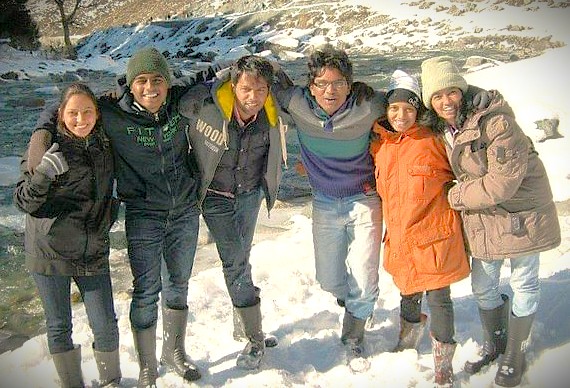
Hari Parbat Fort welcomes all who enjoy exploration and discovery. The site stands on a hill, offering views across Srinagar and Dal Lake. Walking along ancient corridors, hands might rest on stone surfaces that reveal traces of centuries of use. Carved doorways and arches line the way, with soft breezes drifting through open windows. Local people sometimes share insights about the hill’s significance, including stories of change, resilience, and adaptation. Legends and history are reflected in the inscriptions and decorations seen throughout the fort.
Symphony of Generosity: Offerings from Wanderers to Residents
Hari Parbat Fort Srinagar Kashmir. The relationship between locals and those who explore this site is rooted in mutual respect and cultural exchange. We can contribute to the local economy and, in return, benefit from shared knowledge and experiences that enrich our journey. Engaging with artisans and participating in local events fosters relationships that extend beyond our visit, weaving a fabric of understanding and appreciation for Kashmir’s diverse heritage. The experience at Hari Parbat Fort offers a blend of history, culture, and spirituality, inviting all to reflect on the profound narratives that shape the region.